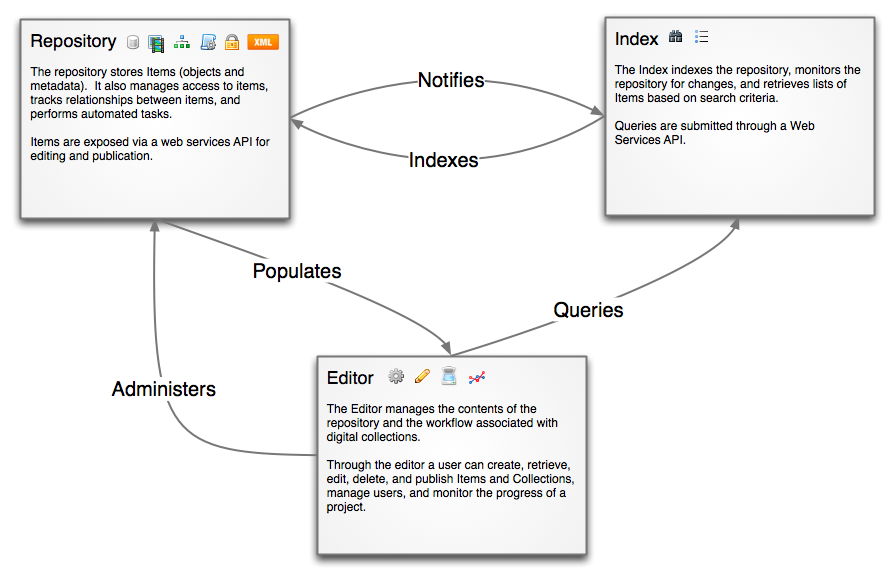 The library’s search for software to support metadata creation served as the topic of two posts of mine from late last year, A Metadata Tool that Scales, and Grand Metadata Tool Ideas. Those posts discussed our internal process and analysis, and engaged in some “guilt-free big thinking.” This post will report on our progress since we broke for the winter holidays. While much conjecture remains in what follows, we gave real progress to report, which I plan to do in three parts over the next week or so.
The library’s search for software to support metadata creation served as the topic of two posts of mine from late last year, A Metadata Tool that Scales, and Grand Metadata Tool Ideas. Those posts discussed our internal process and analysis, and engaged in some “guilt-free big thinking.” This post will report on our progress since we broke for the winter holidays. While much conjecture remains in what follows, we gave real progress to report, which I plan to do in three parts over the next week or so.
Last fall, we completed a successful job search for two programmers to support the project. We were thrilled to bring on two talented and experienced individuals. Lead Programmer Dave Kennedy comes to us from the University of Maryland, where managed the Office of Digital Collections and Research. User Experience Developer TJ Ward made the move from the on-demand self-publishing outfit Lulu. Dave, TJ and I serve as principal developers for the project, with an extended team that includes other members of IT staff in the library.
As the team formed, we took the critical step of fixing a name to the project — Trident, which we chose for a number of reasons that sounded good at the time. First, we call our home-cooked  front-end platform for digital collections Tripod, for its three-legged architecture. Use of the “Tri-” formulation evokes Duke’s history, and the trident imagery its school mascot. Additionally, I am known to use a water metaphor to talk about metadata, which goes as follows: “Metadata flows from librarians to patrons like water to the sea. It is inevitable and inexorable. You don’t want to stop it, and you couldn’t if you did. What you do is engineer the landscape so that it meanders instead of floods, and serves as a nourishing resource, not a destructive force.” The trident, of course, is the tool with which Poseidon controls the seas. Finally, Wikipedia informs us that Bill Brasky used a trident to kill Wolfman Jack. Thanks, Wikipedia!
front-end platform for digital collections Tripod, for its three-legged architecture. Use of the “Tri-” formulation evokes Duke’s history, and the trident imagery its school mascot. Additionally, I am known to use a water metaphor to talk about metadata, which goes as follows: “Metadata flows from librarians to patrons like water to the sea. It is inevitable and inexorable. You don’t want to stop it, and you couldn’t if you did. What you do is engineer the landscape so that it meanders instead of floods, and serves as a nourishing resource, not a destructive force.” The trident, of course, is the tool with which Poseidon controls the seas. Finally, Wikipedia informs us that Bill Brasky used a trident to kill Wolfman Jack. Thanks, Wikipedia!
Continue reading On the Trident Project: Part 1 – Architecture →
 As Tom mentioned, we’re in the process of re-examining our homepage (and the layout of individual collection homepages).
As Tom mentioned, we’re in the process of re-examining our homepage (and the layout of individual collection homepages).



 front-end platform for digital collections Tripod, for its three-legged architecture. Use of the “Tri-” formulation evokes
front-end platform for digital collections Tripod, for its three-legged architecture. Use of the “Tri-” formulation evokes 






